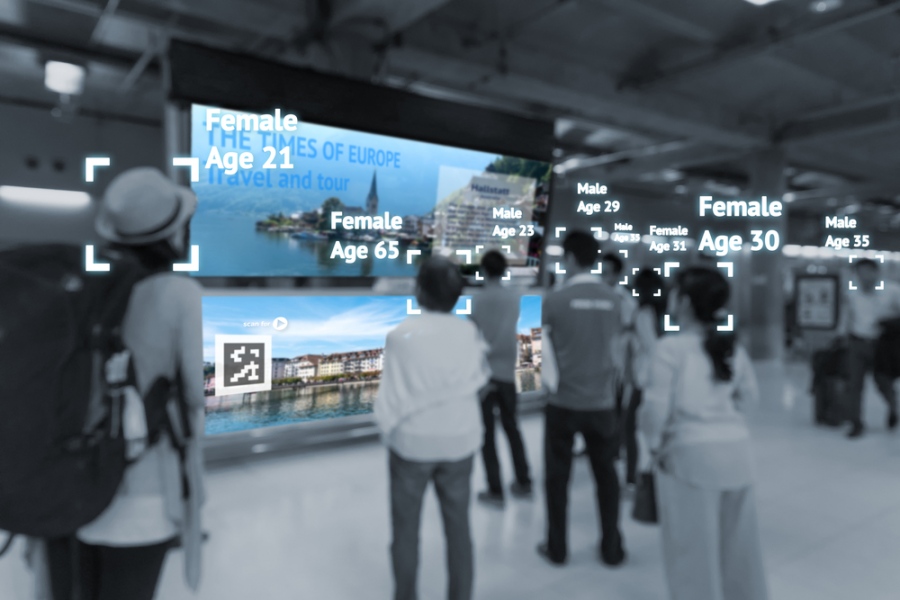Every day we encounter many digital signages while passing by. Some of them create a long-lasting impact in our minds, while others are not clearly visible. Visibility of digital signages doesn’t only refers to what we see with our eyes, it’s also about what we can see when they are out of our sight. Never let your signages fall in the first category.
Remember that amidst the cutthroat competition, the audiences only remember whom they can see repeatedly. And of course, when the design and the content of digital signages create a mark in their minds, they make repeated purchases from those brands displayed on the signage.
There are plenty of great ideas when it comes to the design of digital signages. However, if you are willing to stand out and want to create something from scratch, some tips and tricks will be helpful. It’s better to get some ideas around the best layouts, font sizes, and dimensions if all you want is to create a long-lasting impact with your digital signage content.
We Have Listed Some Guidelines For Designing Digital Signage Content
Ratio
While creating web and digital screens for your business, you might get many options. But that is not true for digital signages. A horizontal screen is a 16:9 ratio, whereas a portrait screen is a 9:16 ratio. This means, whatever design you create or whatever content you write, you need to fit a 16:9 or 9:16 ratio. But, if you are designing for other screen types like an iPad or something outside a regular TV screen, you might change the ratio as per your requirement.
Sometimes, suppose you have specific requirements of ratios while designing content for your digital signages. In that case, you can create custom signages also.
Resolution
The display resolution is an essential factor while designing your digital signages. It refers to how many pixels you want to show on the screen. Remember, the more pixels, the better visibility. If you choose a screen with a 16:9 ratio, your content will fit the screen. Pixels decide how clear your content will be displayed. With the high-definition screen resolution, you can create the best digital signage. The standard pixel dimensions of different screen types are:
3840 X 2160
1920 X 1080
1280 X 720
960 X 540
File Size
Let’s keep the ratios and pixels aside for a while. The actual file size needs to be considered while designing your digital signages. According to the experts, a file size of 2-3 MB is perfect for digital signage. This will be enough to look great while avoiding all the troubles displaying even on lousy wi-fi.
Layout
Now we are talking. Though there are certain limitations in ratio and resolution, you will get plenty of great layouts to use for your digital signage displays. The layouts can effectively balance your content and help all the text and images on a digital screen be seen. But you need to consider a few things while choosing a layout for your digital signage:
- Never use the entire screen to display your advertisement. If your design is shown on a tv screen, you need to leave some safe space around the edges of your design. This way, you can prevent the content of the edges from getting cut off. It is as similar as a bleed for printed materials.
- Always follow the F pattern to arrange your content depending upon its importance. Remember, a human brain prefers reading content from left to right. F is the natural eye-line, and you can use this classic rule while placing content on screen.
- Always stick to the simple 3:5 rule. This means that every segment doesn’t exceed three lines of text with five words per line maximum. This way, you can ensure that each and every bit of your message is easy to read by your audience, even within a shorter timeframe.
- Follow the hierarchy while placing the content. Your digital signage might have some information that is more important than other. Always use bigger and bolder fonts for headline text or an offer.
Fonts
Many digital signage displays failed to create an impact due to their text. If your content is too small to read, you can never get anything out of it. Remember that your target audience will not come closer to read what’s written on the signage every time. Thus, make sure your content is readable from a distance of 7-10 feet. Use fonts that are easiest to read, such as Verdana, Helvetica, and Arial. A font size of 20 to 30 points is easily readable from 7 feet away, whereas a 90-point font can be seen from 20-25 feet away.
Colors
You need to attract your target audience to make them read whatever is written on your digital signages. After choosing the font, you need to focus on the color palette for your signs. Use contrasting color palettes such as light text on dark backgrounds and vice versa. While choosing the colors, make sure that it’s visible to your audience from a certain distance. Experts say that contrasting color palettes are effective in displaying your message to your audience. This is simple if your text stands out against the background, your audience can read it easily.
Sound
If you are considering sound to be a part of your digital signage, that’s great. Advertisements with sound can create more impact than slide shows. If you are streaming videos or content with music, you require to have excellent quality sound. Firstly, ensure that the sound you are using is clearly audible. Secondly, it must be appropriate for the environment where you are displaying your message.
Of course, creating your digital signage is a creative undertaking. And not every time you can follow all the rules we have mentioned above. Rules are meant to be broken, especially when you are sure that you can make a difference by breaking them. There is nothing wrong with a bit of experimentation while designing your digital signages. That way, you will grow to discover the best-fitted digital signage content that enthralls your audience. Find more digital signage design ideas on https://mandoemedia.com/.



